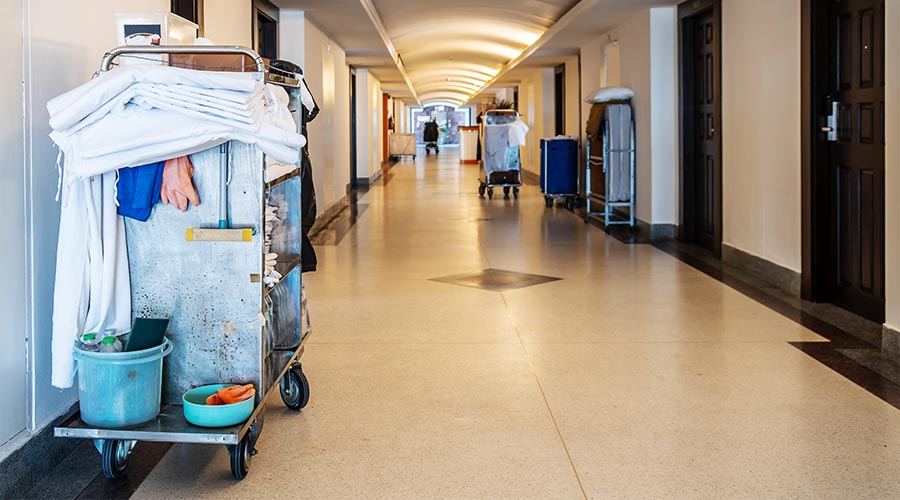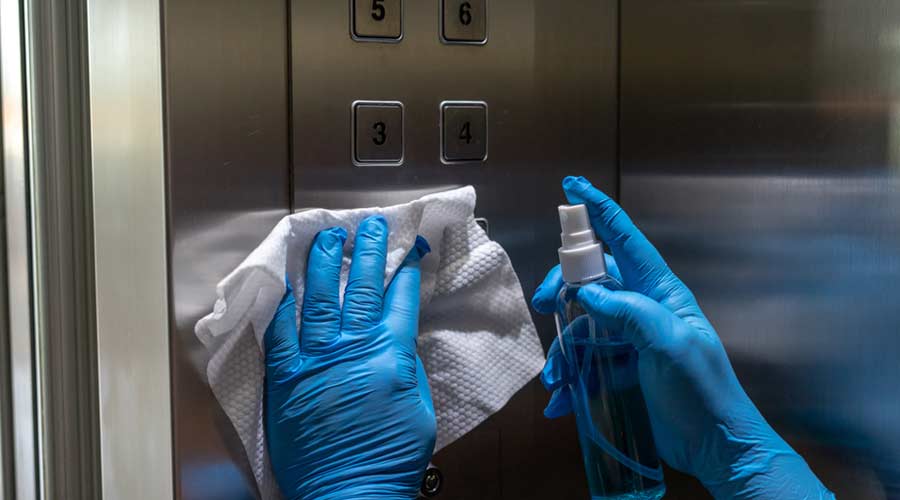
Day cleaning puts maintenance staff in direct contact with office workers. This creates a double-edged sword. On one side, cleaning personnel are very visible, so they are less likely to disappear, or take unauthorized breaks. They are also fostering valuable connections and relationships with clients. However, those relationships can get out of hand fast. Over time, building staff may see contract cleaners as their personal assistants or private maids, opening the door to abuse.
“It can start small but escalate quickly,” says Walker. He’s heard of day cleaners being asked to do small things, like set up a conference room or help carry in pizzas for a party. He’s also heard of day cleaners being asked to do really big, questionable tasks like getting an employee’s car washed or running to the racetrack to place bets.
“That puts the cleaning staff into a bind and steals time from the custodial department,” Walker says.
Managing building occupants’ expectations about what cleaning personnel can and can’t do creates huge administrative headaches. To avoid issues, Griffin suggests arming cleaning staff with a clear script.
“When presented with an out-of-scope task, cleaning workers can always say, ‘let me ask my manager,’” Griffin says.
Hopefully, that will be enough to shut the abuse down.
Inter-Shift Warfare
Humans are tribal creatures. Look at anything from high school cliques to sports fandom to whether someone drinks Pepsi or Coke. While tribalism creates beneficial comradery within a group, it can also foster ill feelings — and bad behavior — towards the “others.”
This is even true between cleaning shifts. And it can cause big headaches for BSC management.
“Inter-shift warfare is real, and it creates real problems,” confirms Walker.
Common problems include shifts blaming each other for issues, one shift leaving tools dirty for the other to clean, and even outright sabotage as one shift hides tools and supplies.
“Often the second and third shift think day cleaners are getting preferential treatment,” Walker reasons. “Every cleaning worker wants to do a great job and will go above and beyond to please the client. But the day shift has the ear of the occupants, so they have a built-in advantage. That can fuel these issues.”
Griffin agrees that there can be some backbiting between shifts. To combat this phenomenon, he recommends clear communication about duties and expectations. Walker agrees that communication is paramount, but goes even further.
“One of the easiest ways to address this is giving each shift their own, dedicated set of tools,” he says. “Building out separate kits for each shift looks expensive at first glance but it can really save money from lost productivity and interpersonal conflict.”
Daytime Benefits
Energy savings is a classic argument for moving to a day cleaning program. It makes sense; consolidating to first shift maintenance means buildings can shut off lights and turn down HVAC after hours. A 2014 study references some big energy saving numbers gained by customers that switched to day cleaning only. (Although lighting costs have already come way down, thanks to a decade’s-long expansion of LED technology.)
Energy savings are just one benefit to day cleaning. As mentioned earlier, working during the day is healthier for employees.
Rathey adds to his argument, noting that “A major study in the American Journal of Psychiatry showed people exposed to full-spectrum light had significant improvements in mood and energy,” and “A study in the Journal of Occupational Health showed workers under full-spectrum lighting had fewer headaches, more energy, and higher job satisfaction.”
“I can’t tell you how many times I’ve cleaned a facility at night, then returned the next day to see dust that was missed. So, yes, lighting matters,” says Rathey.
With this in mind, he suggests BSCs incorporate lighting levels in their bids.
“Paying attention to such detail and conveying that information to the customer makes the BSC a better and more valuable business partner,” Rathey says. “I was a BSC for many years, and selling a unique value proposition is crucial to separate the best from the also-rans. Otherwise, it comes down to the lowest bidder in many cases.”
Each shift comes with its own set of advantages and disadvantages, so the best approach comes as no surprise.
“In my experience, a hybrid approach works best,” says Walker. “A day porter is there for spills, restroom checks, and conference room tidying while the night crew does the deep cleaning. There still has to be clear communication and expectations but I do think this works best.”
Pros and cons, day versus night. It’s an inescapable conflict.
Amy Milshtein is a freelancer based in Portland, Oregon. She is a frequent contributor to Contracting Profits.
Benefits and Tradeoffs of Day and Night Cleaning

 Celebrating BSCAI's 60th Anniversary eBook
Celebrating BSCAI's 60th Anniversary eBook The Down and Dirty on Cleaning in Virus Season
The Down and Dirty on Cleaning in Virus Season How Surfactant Use is Expanding in Commercial Cleaning
How Surfactant Use is Expanding in Commercial Cleaning